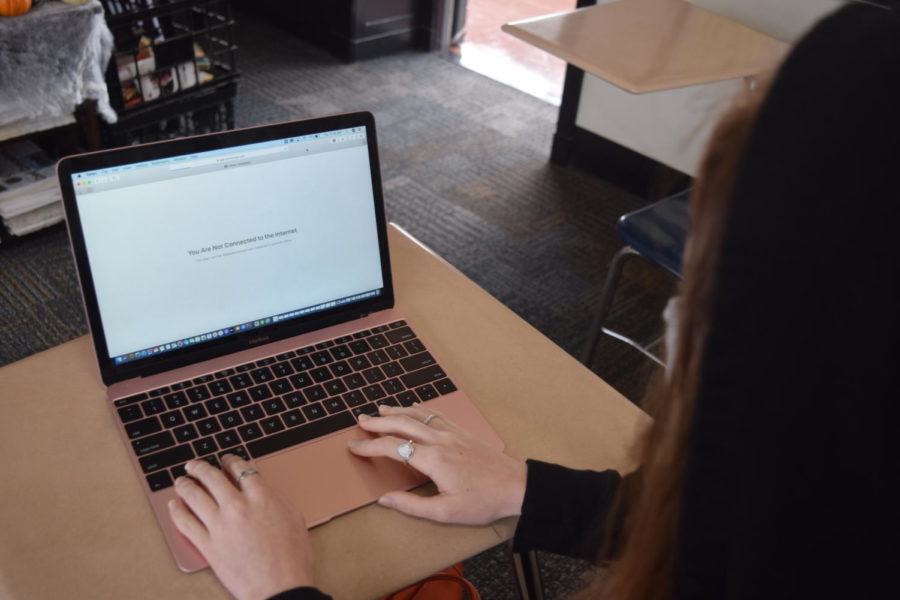IT looking to improve connectivity despite costs
With so many people using the Wi-Fi, the connection can be slow
October 30, 2021
Although students are finally relieved of the struggles and tolls of online school, in-person attendance at Riordan has posed numerous challenges. Particularly, the ongoing Wi-Fi issue, exacerbated by the integration of girls and attendance of the full student body, has recently intensified.
Frankie Maule ’24 remarked, “It’s frustrating when my iPad malfunctions at school.”
Whether it’s a lesson, presentation, or assignment not loading, students and teachers alike know the frustration and annoyance inflicted by slow wifi during the school day.
Jordan Tan ’24 said, “It has disrupted several class demonstrations.”
However, it’s important to understand the contributing factors to this issue and the approach that’s being implemented to fix it.
During COVID, with only half capacity, the Wi-Fi, despite being slightly problematic, was a much less prevalent concern. Yet, with the addition of nearly 300 students, and expansion of the school population, there can be up to 2,000 devices present on campus.
Additionally, Riordan is built of cement and has a significant amount of metal piping, meaning the Wi-Fi is constantly being interfered with. According to John Wu, Director of Technology, fixing these infrastructural conditions would require considerable labor, build-out, and construction.
Wu stated, “Compared to Riordan’s Wi-Fi system set up in 2012 versus now, the cost has more than quadrupled.”
Nevertheless, efforts to remedy the predicament, including building shielded cable pathways to each classroom, creating quicker runs, and looking to purchase new Wi-Fi access points, are being made by the Riordan Technology team.
Though these advancements may take time and will be gradual to avoid greatly impacting boarding students, Riordan’s Wi-Fi connection will eventually increase to support upwards of 3,000 devices. For now, students and teachers are asked to remain patient with the computers and iPads as they take time to load, and recognize the changes accompanying this transitory phase.

